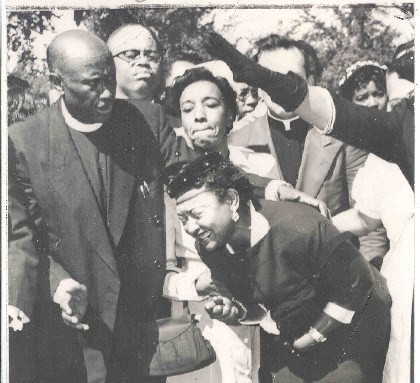
On the Anniversary of Emmitt Till’s Death
On the anniversary of Emmitt Till’s death, I am reminded of the first time I truly experienced Mississippi. I was brand new to Mississippi in 2008. I had just started doctoral studies in History at the University of Mississippi when I ran into a friend, documentary filmmaker and former teacher, who taught for several years in the Mississippi Delta. He said “Hey Otis, you been to the Delta yet?”
At the time, I had only the faintest idea of the richness of this region’s history and culture. Upon taking my friend’s tour, I would soon learn not only is it home to some of the best food east of the Mississippi, but it was both the birthplace of America’s music as well as the modern Civil Rights movement.
Mississippi Scenes
As my friend drove me around Indianola (the home of B.B. King) and Greenwood (near where Robert Johnson played the blues), we also drove through Ruleville (home of Fannie Lou Hamer) and Money (the small farming community where Emmitt Till was visiting in the summer of 1955). It was also my first time seeing Parchman, the Mississippi State Penitentiary where the Freedom Riders were held in 1961.
Time stood still, and I imagined myself in a different time period, as I rode through the beautiful alluvial plain of the region. An eerie feeling came over me as we pulled into the largely deserted town of Money. There is a dilapidated general store (Bryant’s Grocery) about to fall in on itself, railroad tracks, and cotton fields, soybeans, as well as a big silver and black marker. This marker describes the history of what happened in Money on August 28, 1955.
Civil Rights Sparked
This inauspicious little delta farming community was “ground zero” for the modern Civil Rights movement. The reason is Emmitt Till. This teenager, (who would be 75 today) inspired a whole generation of activists in the 1960s to take a stand for civic freedoms and equalities, or what Fannie Lou Hamer would call “becoming a first-class citizen.”
Indeed, if you were to ask any Civil Rights activist in SNCC (Student Nonviolent Coordinating Committee) in the 1960s what one event motivated them to participate in the movement, many would have said seeing pictures of Till’s mangled body in Jet magazine in 1955, and reading his story when they were his age.
…Lest We Forget
My friend drove me down to the house where two men, Roy Bryant and J.W. Milam, came and kidnapped Till at gunpoint, who must have been scared out of his mind. He then drove me on the route to where the men took Till to a barn and beat him to death. He then showed me the Tallahatchie River, where they dumped his mangled corpse, which was attached at the neck with barbed wire to a 70 lb. cotton gin fan. All of this because teenaged Emmitt Till allegedly whistled at Bryant’s wife.
On this day, let us never forget what we are capable of as human beings. May we never forget we have done unspeakable things to one another. We also must remember the injustice. In September of 1955, Bryant and Milam were acquitted by an all-white jury, and later sold their story of how they murdered Till to Look magazine.
In the midst of this, we look to Jesus Christ, the one who will deal perfectly with all injustice and will make all things right. Until then, let’s be inspired by history to look around us for modern-day forms of injustice and work to make them right. Let Till’s legacy continue to encourage us today, to act on behalf of those who are victimized and terrorized. And in the memory of Till’s death, let’s pursue what is right, good, just and true.
Rest in peace poor, young Emmitt Till: the boy who changed a nation and helped change me.


blues and brothers
Right now it looks like BlogEngine is the top
blogging platform available right now. (from what I’ve read) Is that what
you’re using on your blog?